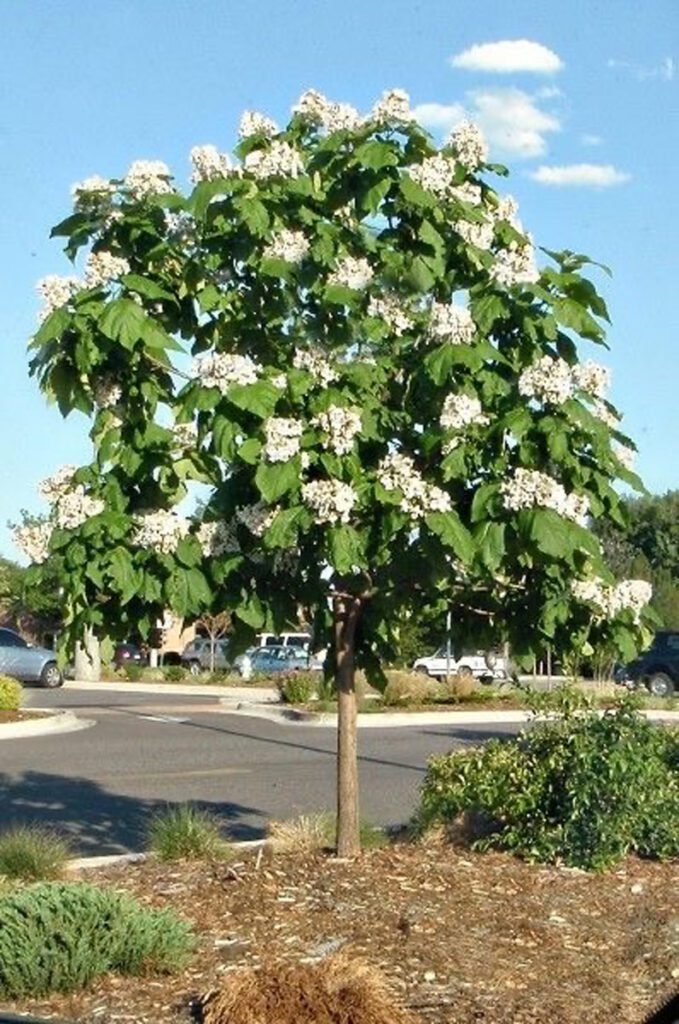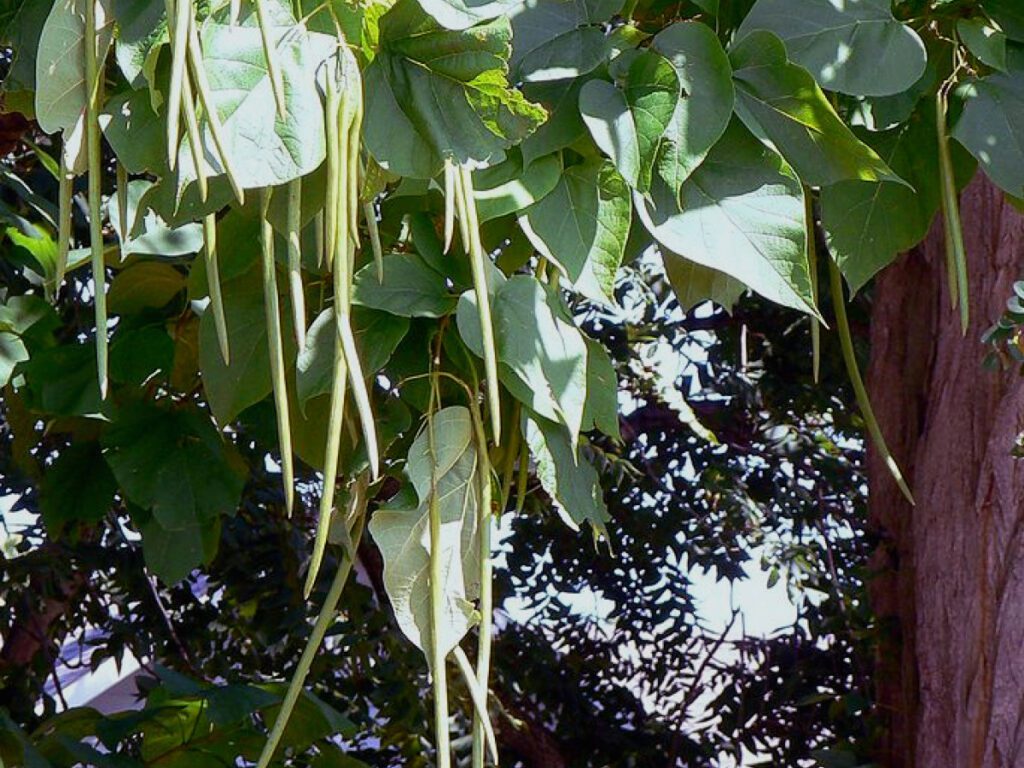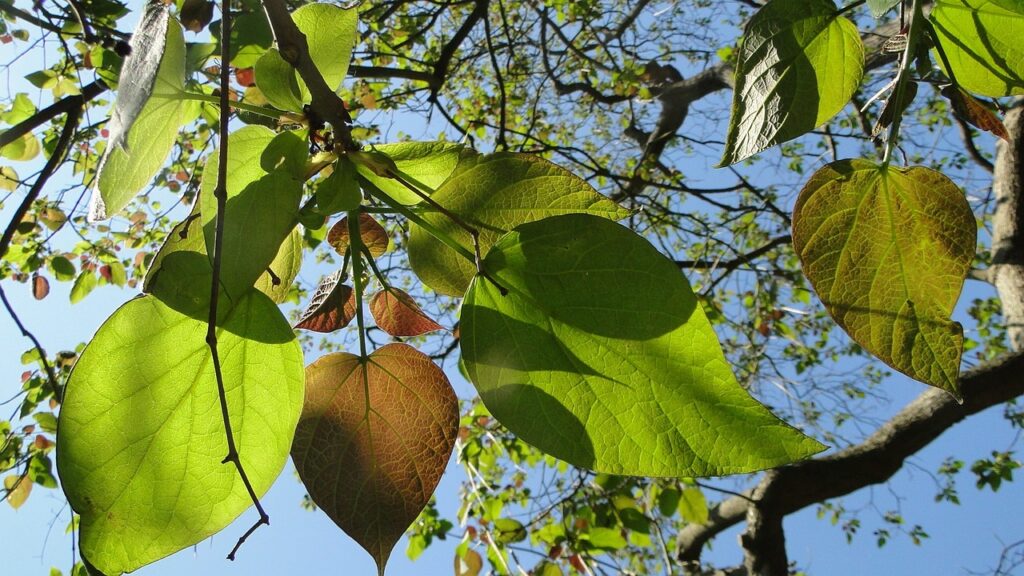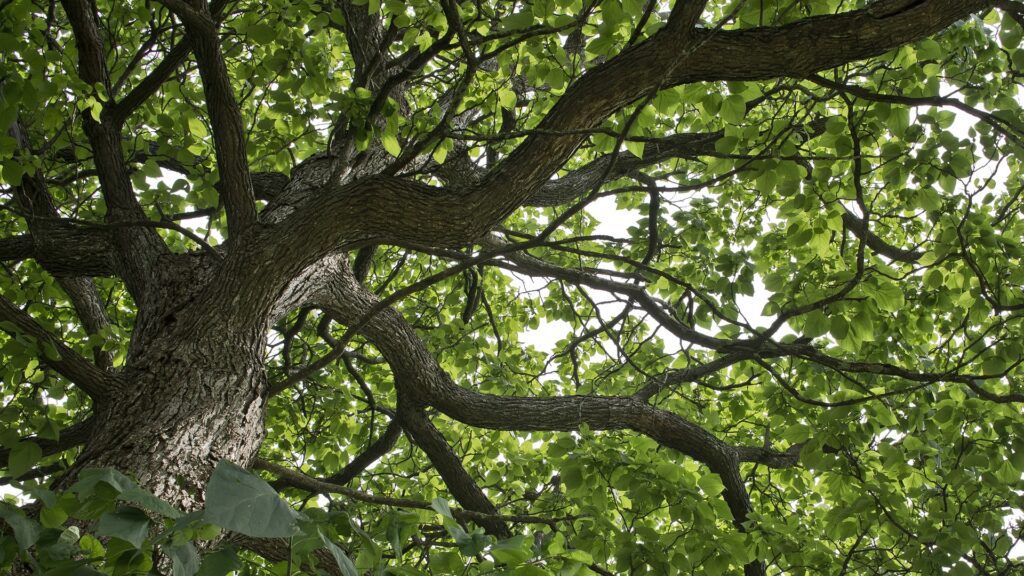Catalpa Trees
Northern Catalpa
Catalpa Speciosa
Description
This species of the Catalpa tree, native to the midwestern United States, is known technically as Catalpa Speciosa aka the Northern Catalpa, Hardy Catalpa, Western Catalpa, Cigar Tree, Catawba Tree, or Bois Chavanon. The Northern Catalpa tree is a medium-sized deciduous tree that can reach a height of 40 – 60 ft and a width of 20 – 40 ft. The Latin term speciosa means “showy” and, as evidence of this trait, it is often used as an ornamental tree.
It has a trunk that can be up to one meter in diameter, and the brown to gray bark turns into hard plates or ridges as it ages. The leaves are large, heart-shaped, pointed at the tip, and the undersides are slightly hairy. In autumn, the leaves tend not to color before they fall. Instead, they either fall quickly after the first hard freeze or turn a light yellow-brown color before they fall. The catalpa tree is the last tree in spring to produce leaves. The sunken leaf scars on the winter twigs of northern catalpa are similar to those of few other trees and resemble suction cups. The trumpet-shaped flowers are white or pink and measure 1 – 2 inch flowers have yellow stripes and purple spots.
The seed pod container can remain attached to the tree during the winter and can be mistaken for brown icicles. Numerous flat, light brown seeds with two papery wings are found in the pod.
It is firmly connected with Southern Catalpa, and can be recognized by the blossoming panicles, which bear fewer bigger blossoms, and the somewhat more extensive seed units.





Where it can be found
Catalpa Speciosa can be found in USDA Hardiness Zones 3-8.
It can grow almost anywhere in North America but it prefers moist soil with a high pH and full sun.
Over the past two centuries, the Northern Catalpa has been grown extensively in Ohio. It is now naturalized in both urban and rural areas. Northern Catalpa, which grows quickly, was brought to Ohio by farmers to make a lot of fencepost timber.
In urban areas, where it is used as both a shade and an ornamental tree, there are three problems. From winter to spring, Northern Catalpa releases fragments of its long fruits and fringed seeds, making cleanup a chore. In addition, it frequently grows much too large for the space it occupies in the landscape, obstructing or shading other desirable plants.
 Now taking orders for Spring 2024. Get your order in early!
Now taking orders for Spring 2024. Get your order in early! 
